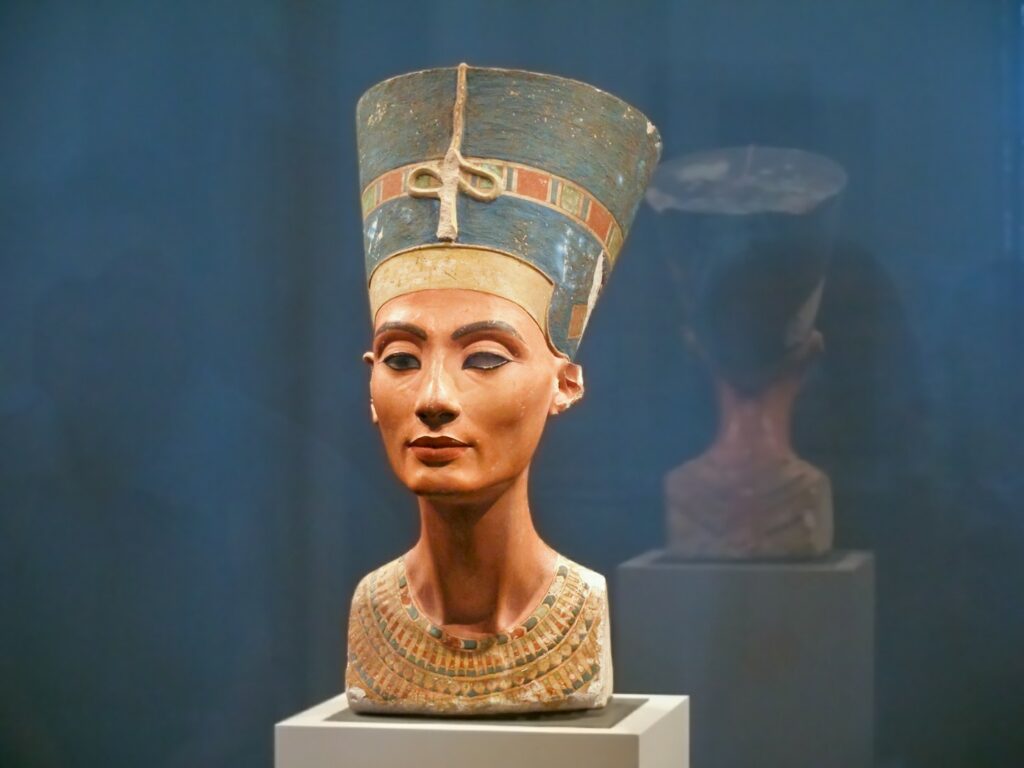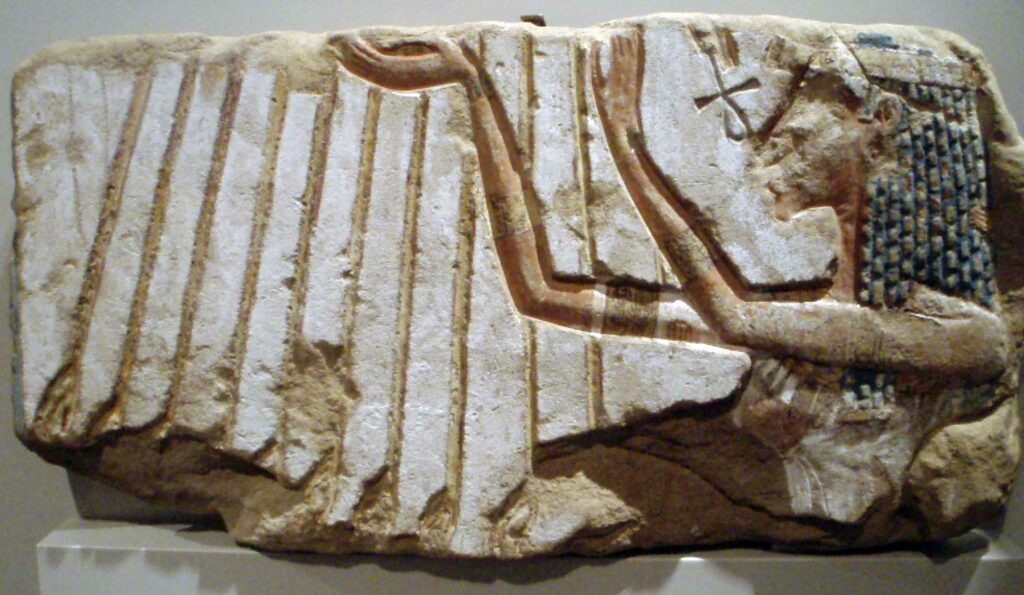Why did she vanish completely from history in the 12th year under the reign of Akhenaten? We can’t find any record about her. She disappeared without a trace.
Living in the 1300s B.C.E., Nefertiti was the Queen of the Nile. It was impossible to overlook her glorious beauty. In around 1345 BCE, Thutmose sculpted a famous statue of her, and her visage was well preserved in it. In 1912, researchers found it. After unearthing one of his workshops, they found that he had sculpted many likenesses of Nefertiti. The unusual crown on top of her head immediately distinguished her. She wore it in several works of art. In terms of ideal female beauty, she is a typical example.

She married a pharaoh known as Amunhotep IV when she was sixteen. Shortly after assuming power in Egypt, Amunhotep IV abandoned all religious traditions and began to worship Atenman, the sun god.
After spreading this religion throughout the kingdom, Amunhotep IV changed his name to Akhenaten. Akhenaten was considered as “the living spirit of Aten.” The royal couple broke away from ancient Egyptian customs and built a new wealthy capital, Amarna.

Nevertheless, Nefertiti received at least ten prestigious awards in her lifetime. As part of the significant change, Nefertiti also changed her name. She named herself Neferneferauten Nefertiti, which meant “Beautiful are the beauties of Aten, a Beautiful Woman has come.” Egypt’s wealth had peaked during their reign.
Nefertiti had six daughters. The artworks depict the couple as having a joyful family life. Nefertiti is a powerful woman who can drive her chariot, lead the main rituals, and even kill her enemies.
Nefertiti couldn’t give birth to a son. Is this a reason why she completely disappeared from her history in the 12th year of Akhenaten’s reign, which lasted for 17 years? There will be no more records of Nefertiti. She vanished without a trace.
In theory, people believed that she died naturally. Why isn’t it mentioned anywhere when it comes to literature or art? What is the location of her grave? Why is the Queen’s room empty in the Royal Tomb of Amarna?
Did Akhenaten send her into exile to have a son with one of his inferior spouses? Interestingly, since King Tutankhamun was the son of Akhenaten and was born by a lower consort, Nefertiti was not related by blood to Tutankhamun but through a husband and a daughter.
Tutankhamun got married to his half-sister Akhenaten, the royal daughter of Nefertiti. Their two daughters became queens, and Anhensanamun became the wife of the Boy King.
When her husband’s rule ended, and Am-Ra’s worship was revived, was Nefertiti expelled from the kingdom because of her religious convictions?
She may have dressed as a man and reigned as one with her husband as co-regent with equal power. There is no record of this, but at least one previous woman disguised herself as a man to govern as a pharaoh. Hatshepsut, a female pharaoh, ruled Egypt under such pretense during the 15th century B.C.E. She also used a ceremonial artificial beard.
Perhaps Nefertiti (not Smenkhkare) replaced Akenaton so that she could remain in power. Some people in the historical community is convinced of this scenario.
Many people assume Nefertiti suicide. Possibly, she was depressed due to her inability to give birth to a son and the loss of a daughter in childbirth. What exactly happened with Nefertiti?
There are several places in Egypt where Nefertiti’s body may have been hidden. Many believe that Nefertiti resides in one of these mysterious areas. For example, the tomb of Tutankhamun is one of the sites under consideration. A thousand years after her mysterious death, Nefertiti continues to influence art and our understanding of the past. Her legacy of strength and beauty is truly remarkable.
























